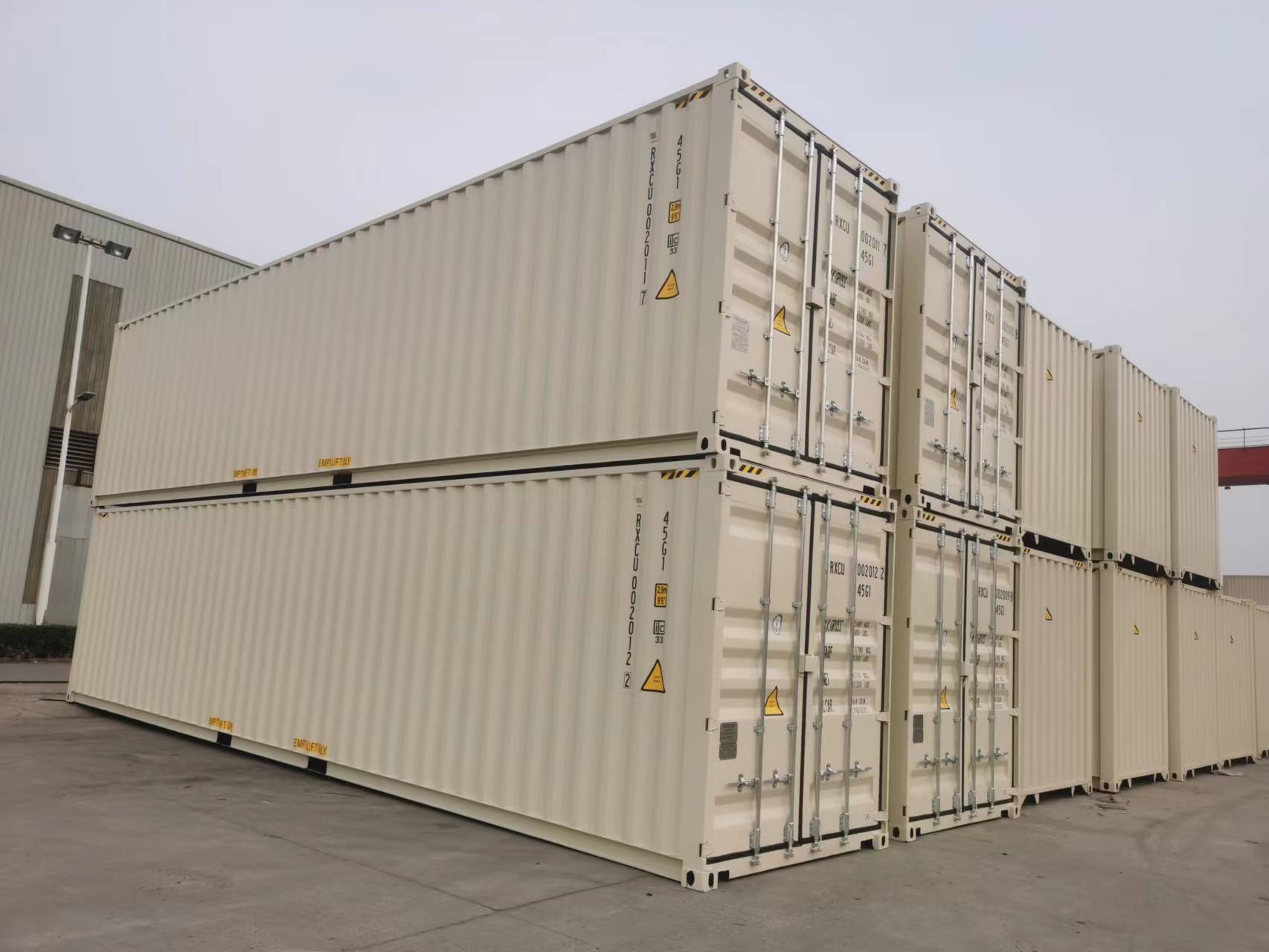Single trip shipping containers, also known as one-trip containers, are a type of shipping container that has been used for a single voyage before being sold or leased for storage or other purposes. They are typically manufactured in China or other Asian countries and are transported to their destination empty or partially loaded with cargo.
Single trip containers are usually in near-new condition, with minimal wear and tear. They are made of high-grade steel and are equipped with a range of features and accessories, such as lockable double doors, ventilation slots and in some instances forklift slots. They are available in a range of sizes, from 10ft to 40ft, with standard or high cube heights. Larger sizes are also available but less common, such as 45ft and 53ft containers.
One of the main advantages of single trip containers is their excellent condition. They are usually free of dents, scratches, and rust, which makes them ideal for a range of uses, such as storage, housing, and offices. They also have a long lifespan, typically lasting 10-15 years or more with proper maintenance.
Another advantage of single trip containers is their availability. They are widely available from container manufacturers and shipping companies around the world, making them a convenient and cost-effective option for customers who require a high-quality container for a specific use. Single trip containers are a high-quality and cost-effective option for customers who require a near-new shipping container for storage, housing, or other purposes. They are widely available and have a long lifespan, making them a reliable and sustainable choice for customers around the world.



Acceptable Damages in a One Trip Shipping Container
One trip shipping containers are typically in near-new condition, with minimal wear and tear, as they have been used for a single voyage before being sold or leased for storage or other purposes. However, some level of damage may be acceptable, depending on the specific use and requirements of the customer.
Minor scratches, dents, and rust spots are common on one trip containers, and are usually considered acceptable as long as they do not affect the structural integrity of the container. These cosmetic issues do not affect the container’s ability to provide secure and weather-resistant storage for goods, and are generally not a cause for concern.
However, any damage that affects the structural integrity of the container, such as large dents, holes, or cracks, is not acceptable and can compromise the safety of the container and its contents. In such cases, the container should be thoroughly inspected and repaired by a qualified professional before being used for any purpose.
One Trip Container Order and Delivery
One Trip Shipping container ordering and delivery procedure with Seablox is a quick and straight forward process, but there are several common steps involved in the process. Here is a general overview of the shipping container ordering:
- Order placement: Customers can place an order for a shipping container with Seablox, either online or by contacting their sales team directly at 647-657-5605. The customer will need to specify the type and size of the container, as well as any additional features or modifications required.
- Container preparation: Once the order has been placed, the Seablox will prepare the container for delivery. This may involve cleaning, painting, and any necessary modifications requested by the customer.
- Transport booking: Seablox will then arrange for the container to be transported to the customer’s location. The transport method may vary depending on the location and accessibility of the delivery site, and may involve a truck or a crane. The customer may choose to arrange for their own transportation as well, if it is more convenient.
- Site preparation: Before the container is delivered, the customer will need to ensure that the delivery site is prepared and accessible. This may involve clearing any obstacles or debris, leveling the ground, and providing a clear path for the delivery truck or crane.
- Delivery: The container will then be delivered to the customer’s location, either directly onto the ground or onto a pre-prepared foundation. The customer or their representative will need to be present to accept delivery and inspect the container for any damage or issues.
- Container placement: Once the container has been delivered, the customer will need to determine the final placement of the container. This may involve using a crane or forklift to move the container into its final position, or simply pushing or rolling it into place.
- Inspection and acceptance: After the container has been placed, the customer should inspect it thoroughly for any damage or issues. If everything is in order, the customer will need to sign off on the delivery and accept the container.
Overall, the shipping container delivery process is very simple but may require some planning and coordination. However, by following these basic steps, customers can ensure that their shipping container is delivered safely and efficiently.

